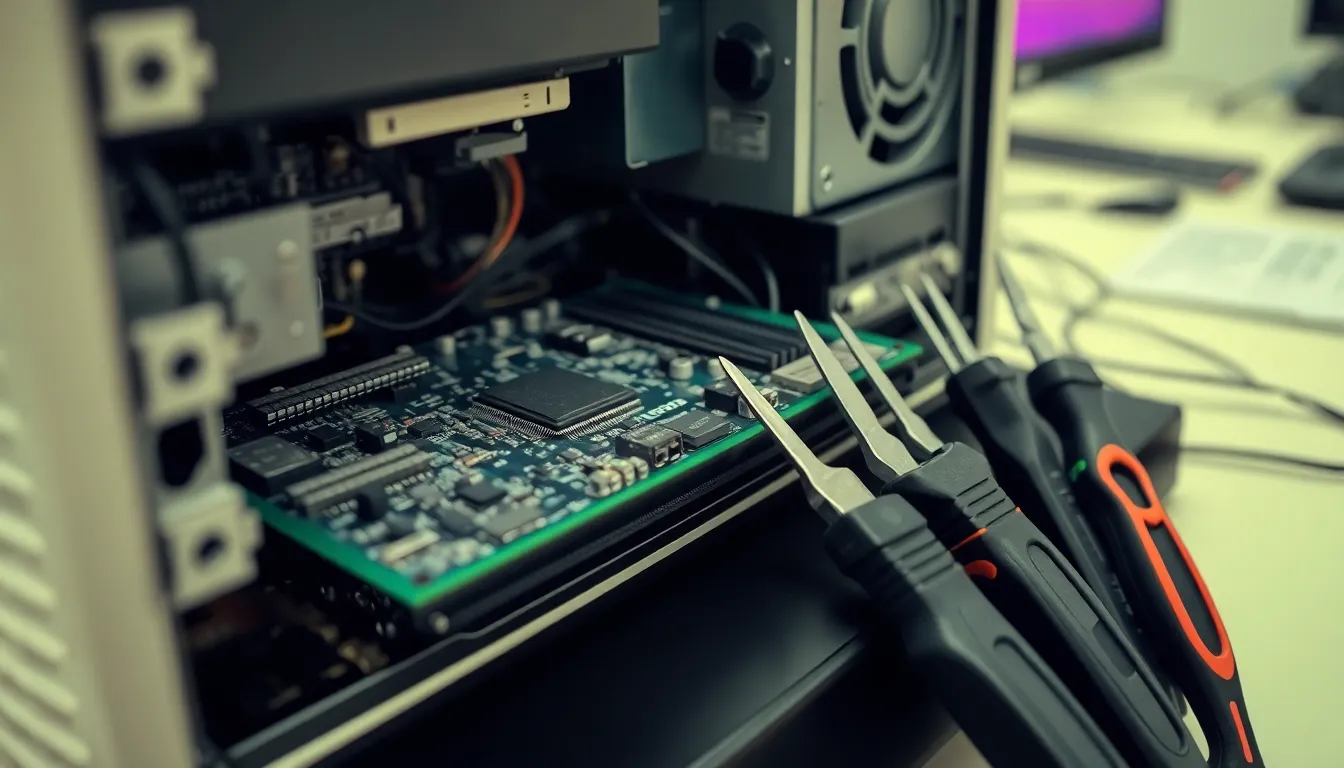Converting measurements can feel like trying to decipher a secret code. Take 5/32 inch for example—what on earth does that mean in millimeters? If you’ve ever found yourself scratching your head over fractions and decimals, you’re not alone. This conversion isn’t just a math exercise; it’s a vital skill for DIY enthusiasts, engineers, and anyone who enjoys a good home project.
Table of Contents
ToggleUnderstanding Measurement Conversions
Measurement conversions require precision, especially when translating from inches to millimeters. The challenge often lies in grasping the different units and their relationships. In the case of 5/32 inch, the conversion results in 3.96875 mm, which can be rounded to 3.97 mm for practical use.
Conversions matter for various fields, including engineering, carpentry, and crafting. Each profession relies heavily on accurate measurements to achieve desired outcomes. Knowing how to convert accurately can prevent costly errors during projects.
Using a conversion calculator simplifies the process significantly. Tools often allow for quick translations of fractional inches into millimeters, enhancing efficiency. When working manually, familiarity with common fractions and their decimal equivalents aids in quick assessments.
Learning basic conversion factors provides added confidence. For example, 1 inch equals 25.4 mm. Familiarizing oneself with this standard fosters a solid foundation for more complex calculations. Practicing with other measurements, such as 1/4 inch or 1/2 inch, builds additional skills.
Understanding measurement conversions is pivotal. The ability to convert 5/32 inch to its millimeter equivalent not only aids in everyday tasks but also supports professional applications. Prioritizing knowledge in this area equips individuals to tackle diverse projects with ease.
The Importance of Accurate Measurements

Accurate measurements play a crucial role in many fields. In the engineering sector, precise conversions ensure components fit perfectly, leading to overall project success. Structures often rely on measurements taken in inches, so professionals frequently convert these to millimeters. Failure to do so can result in faulty designs and costly mistakes.
Industry Applications
Various industries depend on accurate metric conversions. In construction, carpenters use specific measurements to ensure structural integrity. Engineers design systems where every millimeter matters, especially in aerospace or automotive sectors. Architectural designs require precise measurements for aesthetics and functionality. Each industry demands accuracy to avoid errors that could compromise safety and performance.
Everyday Uses
Individuals encounter the need for accurate measurements regularly. When tackling home improvement projects, knowing the exact dimensions prevents issues during installation. DIY enthusiasts find precision essential in crafting projects, ensuring that parts align correctly. Cooking often requires specific measurements, highlighting the importance in everyday life. Consumers benefit from accurate sizing when purchasing furniture or appliances, ensuring that items fit their spaces as intended.
How to Convert 5/32 Inch to mm
Converting 5/32 inch to millimeters requires using a specific formula. The conversion factor states that 1 inch equals 25.4 mm. Thus, it is essential to multiply the inches by this factor to find the equivalent in millimeters.
Conversion Formula
The formula for converting inches to millimeters is straightforward. To convert any measurement in inches to millimeters, multiply by 25.4. For 5/32 inch, the formula becomes:
[ text{mm} = text{inches} times 25.4 ]
This formula provides a reliable method for accurate conversions across various applications.
Step-by-Step Calculation
Calculating the conversion for 5/32 inch involves several steps. First, convert 5/32 to decimal form, yielding 0.15625 inches. Next, multiply this decimal by 25.4:
[ 0.15625 times 25.4 = 3.96875 text{ mm} ]
Rounding results provides practical use; thus, 3.96875 mm becomes 3.97 mm. This precise approach ensures accuracy throughout conversions for various tasks and projects.
Common Tools for Measurement Conversion
Measurement conversion requires reliable tools to ensure accuracy. Conversion calculators simplify the process by providing instant results. They help users quickly determine the equivalent of measurements, such as converting 5/32 inch to millimeters with minimal effort.
Rulers with both inch and millimeter markings offer a straightforward method. These tools allow individuals to visualize the difference in measurements while working on tasks like woodworking or crafting. Precision becomes easier with such dual-marked rulers.
Calculating conversions manually remains an option for some. Familiarity with the conversion factor, where 1 inch equals 25.4 mm, proves beneficial. This knowledge aids in making quick calculations without electronic tools.
Mobile apps designed specifically for unit conversion also provide convenience. They typically feature user-friendly interfaces and can quickly convert various units of measurement, including inches to millimeters. Compatibility with smartphones ensures access on-the-go, making them popular among professionals and DIY enthusiasts alike.
Lastly, reference charts serve as practical guides. Charts displaying common conversions, including fractions and their decimal equivalents, facilitate quick comparisons. Having such charts readily available can improve measurement accuracy and enhance overall efficiency when working on different projects.
Mastering the conversion of 5/32 inch to millimeters is a valuable skill for anyone involved in projects requiring precision. Understanding that 5/32 inch equals approximately 3.97 mm can significantly enhance accuracy in measurements. This knowledge not only benefits professionals in engineering and construction but also empowers DIY enthusiasts tackling home improvement tasks.
Utilizing reliable tools and resources like conversion calculators and reference charts can streamline the process. By investing time in learning these conversions, individuals can ensure their projects are executed flawlessly, avoiding costly mistakes. Ultimately, a solid grasp of measurement conversions fosters confidence and competence in various applications.




